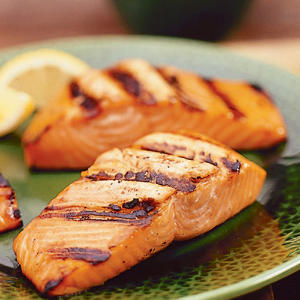 In this section you’ll find helpful guidelines and advice from experienced weight loss surgery patients, nutritionist and surgeons that will help you transition to the regular food phase after RNY surgery.
In this section you’ll find helpful guidelines and advice from experienced weight loss surgery patients, nutritionist and surgeons that will help you transition to the regular food phase after RNY surgery.
Please note that each stage during weight loss as well as maintenance will change during your journey.
Please note that Lap-Band eating is different and is addressed under an additional heading.
Weight loss surgery is a life changing experience, and your going to make it this time!
You have many more meals to go!
Entries by Julia Holloman (4)
regular diet (weight loss) phase 4
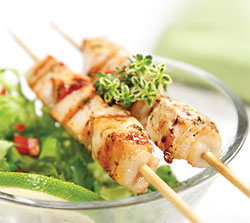 This phase is not the last, but you're almost there. This phase is the regular food phase you will remain on while still losing weight. You should be able to start this phase about 6 weeks after surgery. This phase includes solid food eaten in very small portions. Most foods, with some exceptions such as tough meats like beef, can be eaten as long as they are reduced in fat and sugar.
This phase is not the last, but you're almost there. This phase is the regular food phase you will remain on while still losing weight. You should be able to start this phase about 6 weeks after surgery. This phase includes solid food eaten in very small portions. Most foods, with some exceptions such as tough meats like beef, can be eaten as long as they are reduced in fat and sugar.
It will be to your advantage to know and comply with this phase well, this phase is the tool you will need for weight loss success.
The 5-10-15 guideline
A good guideline is to keep fat grams in the single digits or closer to 5 grams,10 grams of sugar and carbs should be around 15.
Portion size for each meal should be no less than 1/2 cup and no more than 1 cup in size. Meat portions should not exceed 2 ounces per meal. This is recommended, however, personally with hypoglycemia, (I discovered at 3 years out from surgery, that I have to get in more protein to sustain my blood sugar, this works best for me, around 2 1/2 to 3 ounces, depending on the density of the protein). Remember: guidelines are in place to help you succeed... they are not hard, fast "rules". The aim is to keep your portions small, eating what works for you to be successful.
You will be eating the same foods as on the pureed diet for the most part, but they won't all be soft at this point.
Protein is important
At this point you may be able to reduce the protein drink to one a day or bar consumption to one a day and substitute low fat lunch meat slices or low fat cheese slices as a snack between meals. Make sure your protein intake is 50-60gms from meals and snacks before reducing shake amounts.
Getting enough food?
If you are able to consume 1 cup worth of food from the protein and carb list and still have room for more, pick a low carb fruit and vegetable to add to the meal. If you have found that you have stopped losing weight or are starting to gain weight, keep the carb portion to 1/4 cup or one serving and add 1/4 to 1/2 cooked vegetables.
Precautions:
Chew food very well. There is a risk of blockage if you swallow large bites. After a while this will become a habit, so practice, practice, practice.
Foods to avoid:
Tough meats or steaks (your new pouch can not digest these for at least a year)
Untoasted bread
Stringy vegetables like celery, corn, spinach in a can or raw
Membranes of oranges and grapefruit, skins of various fruits and vegetables like apples, pears, and potatoes (skins of fruits and vegetable should be avoided until your pouch is mature, then you need the fiber to maintain good health).
Coconut, seeds, and nuts (early on this is a good suggestion, remember these foods are healthy with the limits and can be added after your pouch is mature).
Make difficult foods easier to digest
Toast bread
Remove membranes from oranges and grapefruits
Peel skins of fruits and vegetables such as apples, pears, and potatoes (see above)
Stick to fish, sauteed chicken, and more tender pork selections.
Very tender red meats, such as finely ground hamburger, (less often) and after one year out, very tender beef tenderloin can be added.
free foods list for phase 4
 fat free creamers
fat free creamers
fat free sour cream
sugar free gum
very low sugar jam
sugar free beverages
bouillon
coffee (decafe)
tea (decafe)
mustard
dill pickles
low sodium soy sauce
sugar free popsicles
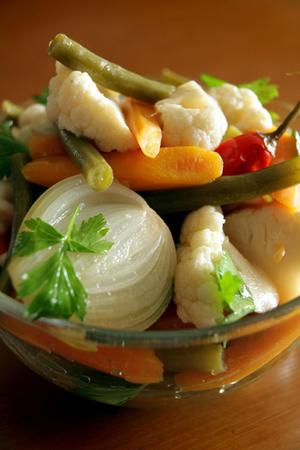 Vegetables:
Vegetables:
artichokes
asparagus
green or italian beans
beets
broccoli
brussels sprouts
cabbage
cauliflower
celery
cucumbers
eggplant
green onions
greens (collards, kale, mustard, turnip greens)
mushrooms
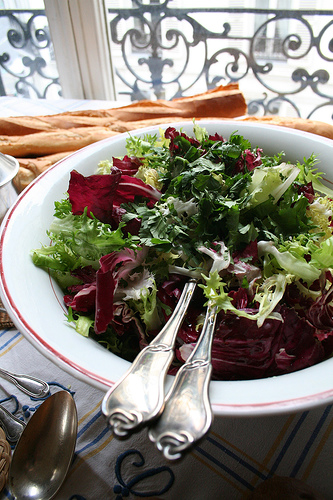 okra
okra
onions
peppers
radishes
salad greens (escarole, lettuce, romaine)
sauerkraut
spinach
summer squash
tomato
turnips
water chestnuts
zucchini
baby your new pouch
 Just after surgery, your new pouch is like a baby. And just like a baby needs soft and easily digestible foods in the beginning, there are certain foods which must be avoided immediately following surgery to prevent complications.
Just after surgery, your new pouch is like a baby. And just like a baby needs soft and easily digestible foods in the beginning, there are certain foods which must be avoided immediately following surgery to prevent complications.
Nuts, seeds, popcorn, dried fruits, high fiber, and fibrous foods should be avoided early on after surgery for gastric bypass patients.
Raw, gas forming foods such as vegetables, (cabbage and broccoli) are not a good idea, in more ways than one! Not only does it not feel so good, you want to avoid pouch enlargement.
Meats that are tough, fatty or too dry may be hard to chew as well as digest. Sautéed chicken may be more moist, and more tender cuts of meat are suggested.
Remember, just like a baby, your new tummy pouch needs a lot of chewing and pre-digestion in order to properly function in complete happiness! Chewing helps do some of the work that your tummy can't do until it matures.
Foods that swell such as rice, pasta, high fiber breads and grits are some foods to avoid. Remember your pouch is very small and swelling can be very painful as well as dangerous. Your pouch needs time to heal and mature. Furthermore, swelling may stretch your pouch, and having a small pouch is your tool to success. Remember, those first two years are really important for keeping that pouch from stretching too much during the healing process. During these first two years your pouch is trying to heal itself my returning to normal, let's don't give it any unnecessary help!
Food tolerances vary from person to person. You will be able to introduce more foods as your body heals from surgery and your pouch matures. A fully mature pouch is said to be completely healed, about two years out from surgery.
Be sure before trying any new food, to take it slow and easy and first. So, if you find that certain foods you try are too dry or give you trouble, set it aside and try again a few months later.
First and foremost follow the advice of your surgeon and dietary counselor. These food guidelines, suggestions and rules are there for your safety and health.
So with proper diet and lots of chewing maybe you can baby your new pouch. Take care of your pouch and your pouch will take care of you!
protein absorption
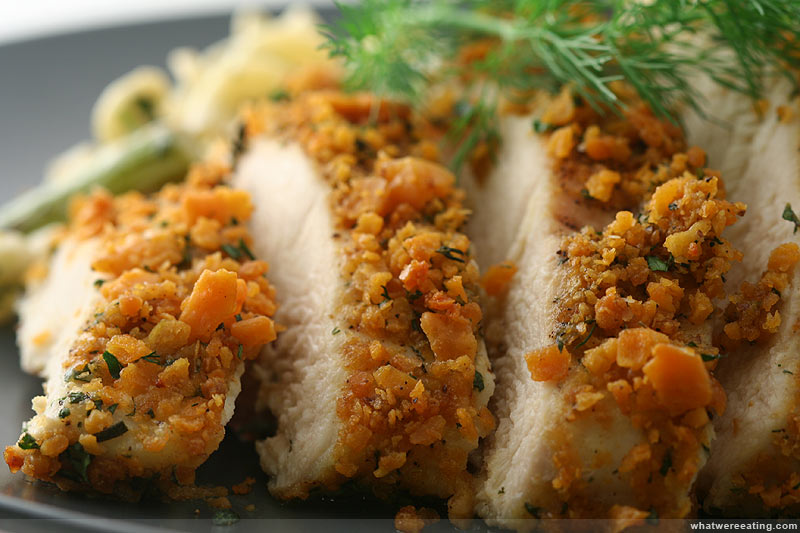
In most support group settings, there is always one main question that comes up, "How much protein you can absorb at one time?"
Most will tell you that it is about 30-40 grams, however,the fact is that there isn't any conclusive research. Some tend to think that it's about 9 grams an hour. Who knows? Besides everyone's body is different and absorption levels vary in individual cases, especially for gastric bypass patients.
During my personal journey, I was very compliant with my protein and diet. I always got my protein supplements in everyday, although my protein blood levels were sufficient, they were always on the low end of the chart (even before surgery). After returning to a "normal" maintenance plan for life, my protein comes from the food I eat, not supplements. Since I have been on a regular maintainence diet, my protein levels are higher...everyone will have a different experience.
Maybe the question could be, "How much do we need and how can we appropriately work that into a well balanced diet?" Spacing out your protein grams throughout the day keeps hunger at bay and your blood sugar level. You can see from the chart below an average amount of protein you would consume at one meal, this could be a good guide to follow.
After all, when we get right down to it, we eat for nutrition and energy, not just to mark off the numbers on a chart. Our focus turns from rules to returning to health and wellness. So with that in mind let's take a look at serving sizes and how much protein each food contains. The chart below will help guide you. Remember, if you are eating smaller amounts based on your current food phase, you should be getting between 70 and 100 grams per-day. That means that the remainder of your protein should be in supplement form. Protein grams on this chart are based on a "regular diet" serving size.* See "food phase" entries for more information on what a regular diet looks like.
On average an ounce of meat or fish has approximately 7 grams of protein.
Beef
- Hamburger patty, 4 oz – 28 grams protein
- Steak, 6 oz – 42 grams
- Most cuts of beef – 7 grams of protein per ounce
Chicken
- Chicken breast, 3.5 oz - 30 grams protein
- Chicken thigh – 10 grams (for average size)
- Drumstick – 11 grams
- Wing – 6 grams
- Chicken meat, cooked, 4 oz – 35 grams
Fish
- Most fish fillets or steaks are about 22 grams of protein for 3 ½ oz (100 grams) of cooked fish, or 6 grams per ounce
- Tuna, 6 oz can - 40 grams of protein
Pork
- Pork chop, average - 22 grams protein
- Pork loin or tenderloin, 4 oz – 29 grams
- Ham, 3 oz serving – 19 grams
- Ground pork, 1 oz raw – 5 grams; 3 oz cooked – 22 grams
- Bacon, 1 slice – 3 grams
- Canadian-style bacon (back bacon), slice – 5 – 6 grams
Eggs and Dairy
- Egg, large - 6 grams protein
- Milk, 1 cup - 8 grams
- Cottage cheese, ½ cup - 15 grams
- Yogurt, 1 cup – usually 8-12 grams, check label
- Soft cheeses (Mozzarella, Brie, Camembert) – 6 grams per oz
- Medium cheeses (Cheddar, Swiss) – 7 or 8 grams per oz
- Hard cheeses (Parmesan) – 10 grams per oz
Beans (including soy)
- Tofu, ½ cup 20 grams protein
- Tofu, 1 oz, 2.3 grams
- Soy milk, 1 cup - 6 -10 grams
- Most beans (black, pinto, lentils, etc) about 7-10 grams protein per half cup of cooked beans
- Soy beans, ½ cup cooked – 14 grams protein
- Split peas, ½ cup cooked – 8 grams
Nuts and Seeds
- Peanut butter, 2 Tablespoons - 8 grams protein
- Almonds, ¼ cup – 8 grams
- Peanuts, ¼ cup – 9 grams
- Cashews, ¼ cup – 5 grams
- Pecans, ¼ cup – 2.5 grams
- Sunflower seeds, ¼ cup – 6 grams
- Pumpkin seeds, ¼ cup – 19 grams
- Flax seeds – ¼ cup – 8 grams
*The definition of portion size is dependant upon the amount of food you choose to eat. In other words, there is no standard portion size. For example, a toddler’s portion size will be much smaller than an adult’s portion size. Alternatively, a serving size is a standard amount used to “eye ball” or to give advice about the quantity of food eaten.
